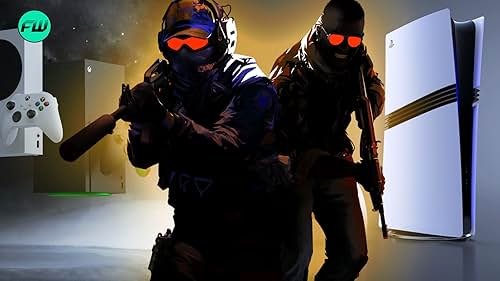Counter‑Strike 1.6: The Tactical Masterpiece That Redefined Competitive Gaming

When discussing the grand history of gaming, very few titles have had the transformative impact of Counter‑Strike 1.6. Originally released in 2003 as the definitive version of the Counter‑Strike series on Valve’s GoldSrc engine, CS 1.6 took the foundation laid by its mod predecessors and polished it into a competitive juggernaut. Its seamless blend of strategic depth, economy-based rounds, and pure mechanical skill captured the hearts of gamers across the globe. Today, two decades later, CS 1.6 remains a living testament to impeccable game design and community-driven longevity. For those eager to relive this landmark experience or discover it anew, you can download CS and return to a world defined by headshots, grenades, and clutch plays.
Part of what cemented CS 1.6’s influence was its place within a vibrant ecosystem of Half-Life–based games and mods. One such title, Day of Defeat, also carried Valve’s heritage forward in a different direction: a World War II–themed squad-based shooter that emphasized realistic weapon effects, class roles, and territory control. Day of Defeat was born from the same creative community that fueled CS 1.6’s rise, proving how versatile and enduring the GoldSrc engine could be. If you’re interested in exploring a contemporaneous but stylistically distinct experience, you can download Day of Defeat and join another influential pillar of the early 2000s FPS expansion.
From Mod Origins to Global Standard
The seeds of Counter‑Strike were planted in 1999 when Minh “Gooseman” Le and Jess Cliffe released their mod for Half‑Life. Deviating from the deathmatch norm, they introduced objective-based, round-driven gameplay pitting Terrorists against Counter‑Terrorists. Bomb sites, hostage rescues, one-life rounds—these mechanics fostered tension and demanded precision. With each round lasting mere minutes yet requiring sharp strategy and swift execution, the game struck a chord with players who craved more than mindless spray-and-pray action.
Valve recognized this potential and acquired the rights, launching a standalone version in 2000. Multiple iterations followed until the release of Counter‑Strike 1.6 in 2003. This definitive edition brought Steam integration, perfected hit registration, optimized netcode, and anti-cheat measures that created a level playing field for all. Far from being just an update, CS 1.6 legitimized competitive reliability and became the unofficial standard for both casual lobbies and professional events.
The community responded enthusiastically. Internet cafés from Seoul to São Paulo became tournament grounds, small clans formed competitive networks, and soon, enthusiasts were spending hours mastering spray patterns, sound cues, grenade line-ups, and rotations. Through all this, CS 1.6 maintained razor-sharp balance and unwavering accessibility.
See also: Explore Creative Ideas for Your Next Social Post
Core Mechanics: Pure, Fearless, and Competitive
CS 1.6’s brilliance lies in its minimalist but exacting design. Every mechanic is intentional, fair, and uncompromising.
- Recoil Control – Weapons like the AK-47 and M4A1 fire with predictable spray patterns. Mastery requires muscle memory and split-second corrections.
- Movement Accuracy – Shooting while moving is inaccurate. Counter-strafing—quickly stopping to regain precision—is a learned essential.
- Economic Depth – Money earned through kills, bomb plants, and round wins must be budgeted wisely. Teams balance full buys against “eco” rounds, creating dynamic strategy shifts.
- Utility Usage – Smokes deny vision, flashbangs disorient enemies, and HE grenades can punish lurking defenders. Proper usage amplifies individual skill into team wins.
- Sound Awareness – The game’s audio is designed to convey location, footsteps, reloads. Listening forms the backbone of preemptive strategy.
With no armor-dictating perks, no regenerating health, and no pay-to-win systems, CS 1.6’s gameplay is unforgiving yet fair—where execution matters more than randomness.
Legendary Maps for Legendary Plays
CS 1.6 didn’t thrive on mechanics alone—it also featured map design that was tactical artistry. Each official map introduced a new battlefield dynamic:
- de_dust2 – The archetypal competitive map with balanced control points, clear battle lanes, and iconic strategies built around mid and long cross.
- de_inferno – Narrow passages like Banana and Apartments demand tight communication and disciplined grenade usage.
- de_nuke – Vertical play, multiple levels, and audio feints make it a masterclass in rotations.
- de_train – Long sightlines, layered cover, and bombsite complexity reward strategic vision.
- cs_office – Close-quarters combat map focused on flash plays and lightning-fast engagements.
These maps fostered a culture of study and repetition—where utility lineups, timings, callouts, and rotation paths were practiced endlessly, instilling a level of map knowledge rare in modern shooters.
Esports Emergence: A Movement, Not Just a Game
By the mid-2000s, CS 1.6 stood at the forefront of esports. Tournaments like CPL, ESWC, and WCG featured it as their main event, drawing crowds and prize pools large enough to finance professional teams like NiP, SK Gaming, and mousesports. Legends like HeatoN, SpawN, NEO, and f0rest became international names—not just for their flicks, but their leadership and strategy decisions.
Competition formats introduced the structure familiar in today’s esports: best-of-three series, map vetoing, economy policymaking, and role-based teams (entry fraggers, anchors, lurkers). The personalities and strategies from that era still shape commentary and coaching in current Counter‑Strike titles.
Day of Defeat: A Parallel Pillar of Tactical Fun
While CS 1.6 modeled modern esports, Day of Defeat carved a niche in historical tactical gameplay. Players chose from class-based WWII infantry roles—rifleman, medic, flamethrower, sniper—and battled for control of strategic points. Sound effects felt weightier, movement more deliberate, and maps revolved around defending choke points and retaking zones.
The pacing was slower than CS 1.6, but the discipline and communication required were comparable. It inspired squads to capture objectives through coordinated assaults—redressing preconceptions about objective-based shooters and inspiring later games like Company of Heroes and Insurgency. If you want to experience a different but related branch of the early modding movement, you can download Day of Defeat and see why it remains a cult favorite.
Community Freedom: Mods, Servers, and Lifespans
CS 1.6 isn’t just Valve’s creation—it’s a community workshop. Private servers spawned a host of creative modded experiences:
- GunGame, Zombie Mod, Surf maps, KZ climbing, Deathmatch, Jailbreak, and more.
These variations allowed players to enjoy CS 1.6 beyond competition—experimenting with fun, challenge, or chaos.
New maps, sound packs, skins, competitive leagues, and fan videos circulated for years, further fueling the community engine. Today, hundreds of servers stay online, busily hosting matches, mods, training tools, and competitive ladders—many maintained daily by volunteers.
Why CS 1.6 Still Matters
Despite graphical advances, microtransaction systems, and complex progression systems in modern titles, CS 1.6 remains relevant because:
- It runs on almost any machine, making it accessible worldwide.
- It emphasizes fairness—no unlocks, no randomness, just player ability.
- It’s fast and responsive, with no excessive loading or menus.
- It fosters discipline—aim, sound reading, communication, economy management.
- It holds history—original game, original maps, original mechanics.
For players looking to train, compete, or simply enjoy a timeless tactical shooter, CS 1.6 offers a uniquely rewarding experience.
Conclusion: A Titan That Still Lives
Counter‑Strike 1.6 is more than nostalgia—it’s the bedrock of competitive FPS gaming. It combined mechanical mastery, strategic complexity, and global community in a package few games before or since have matched. It invented esports practices, popularized map study, and fostered discipline and teamwork.
If you’re ready to dive into the original arena that changed gaming forever, don’t hesitate to download CS. And if you’d like to explore the other creative side of the Half‑Life ecosystem, where teamwork took another form in historical combat, check out Day of Defeat.
History is alive in CS 1.6—and its echo still shapes every competitive shooter today.





